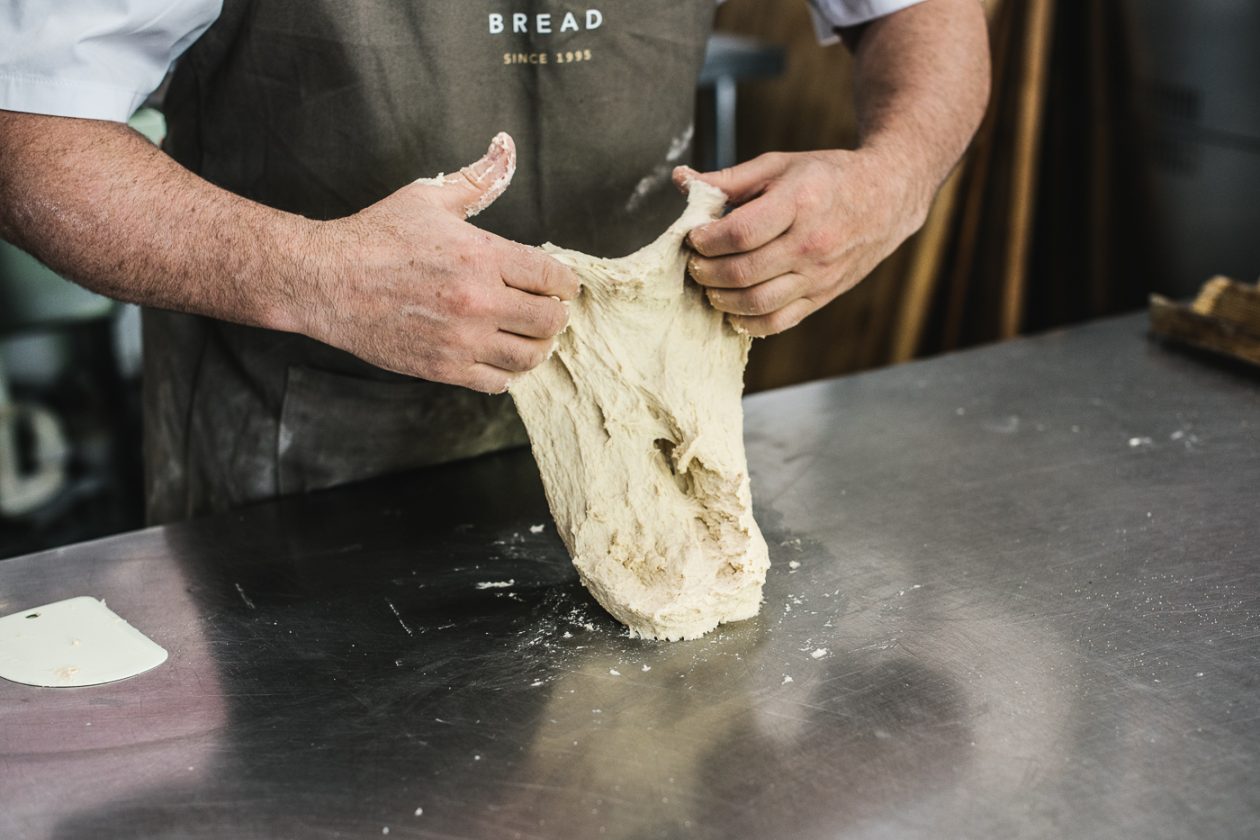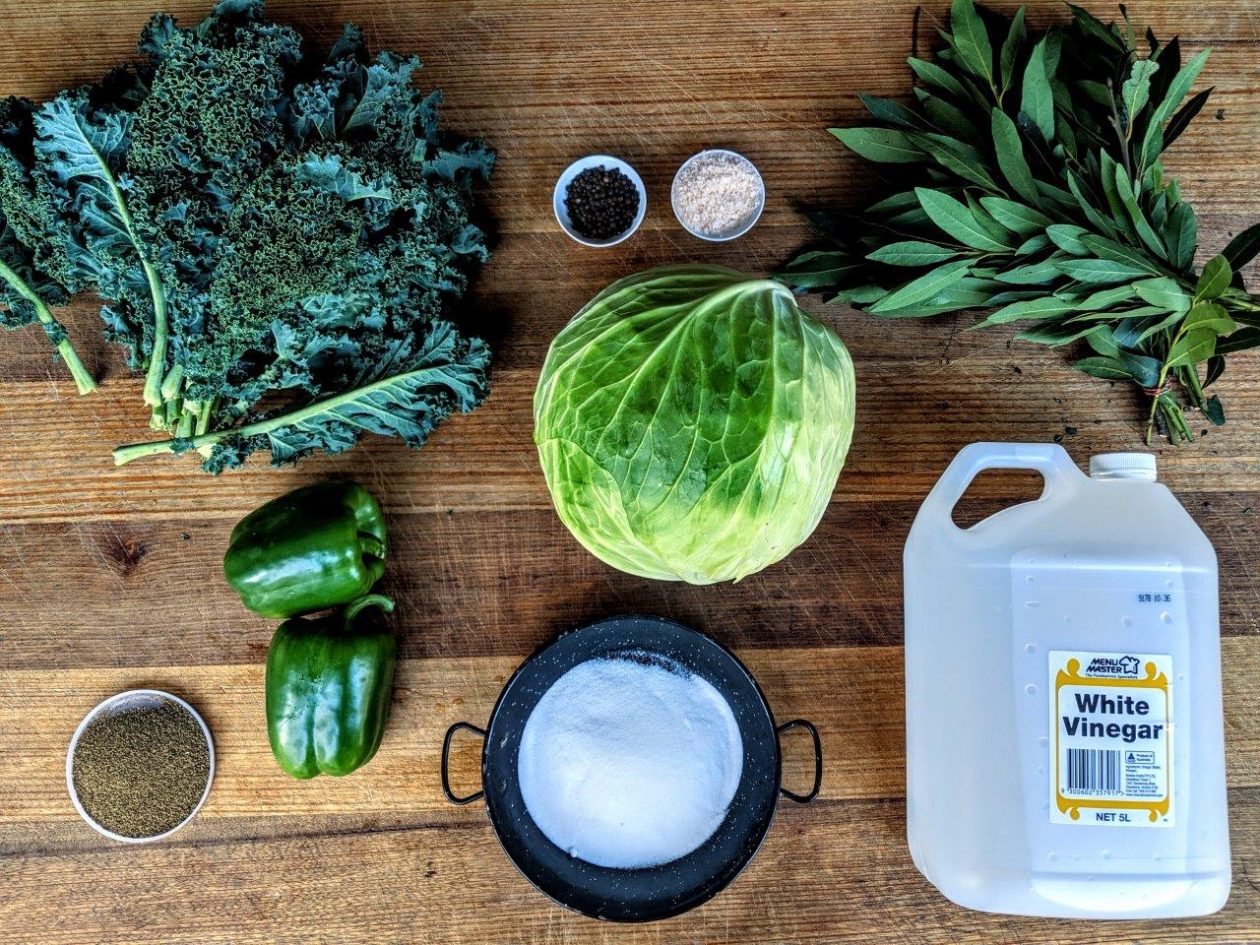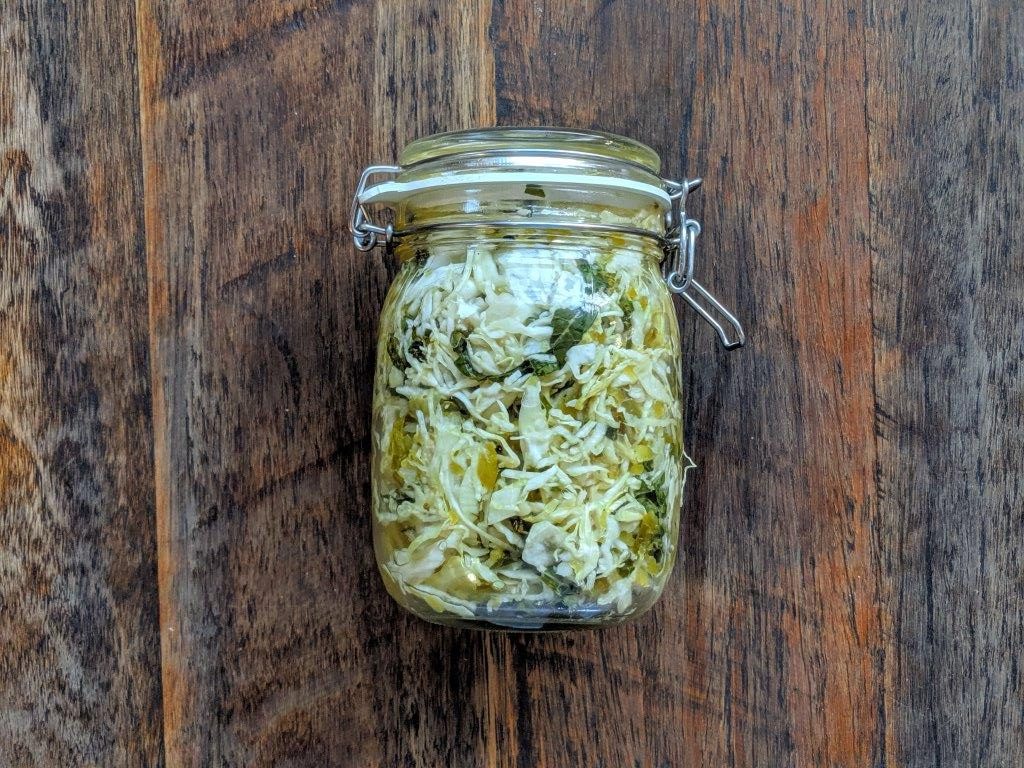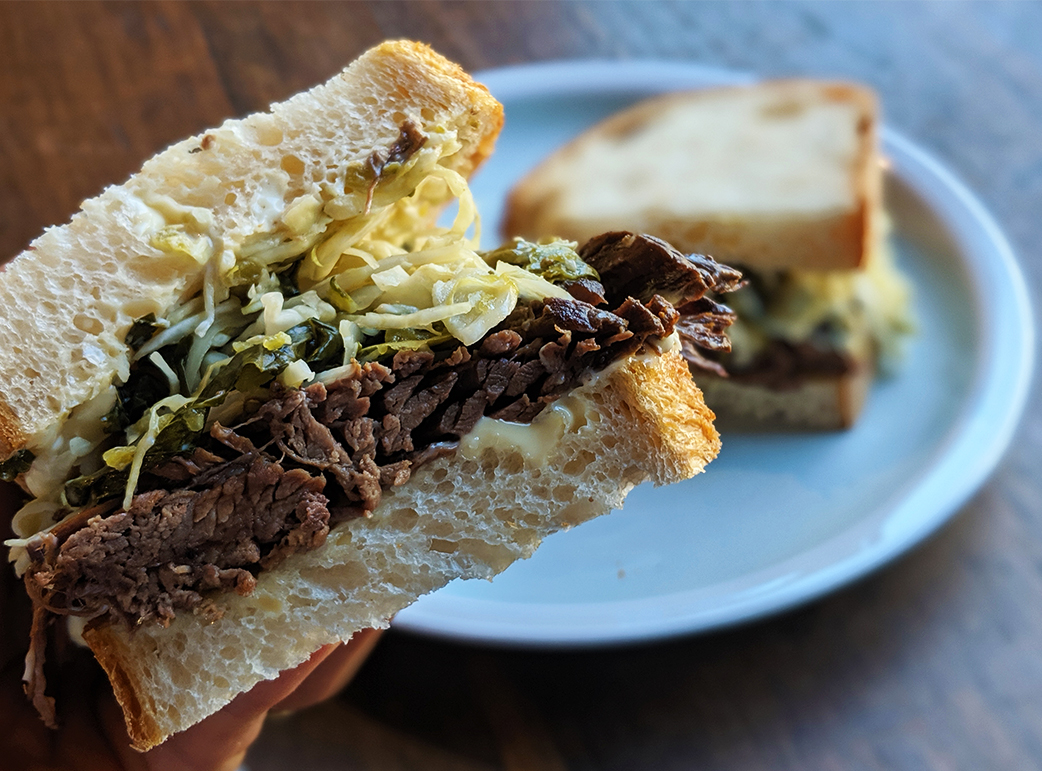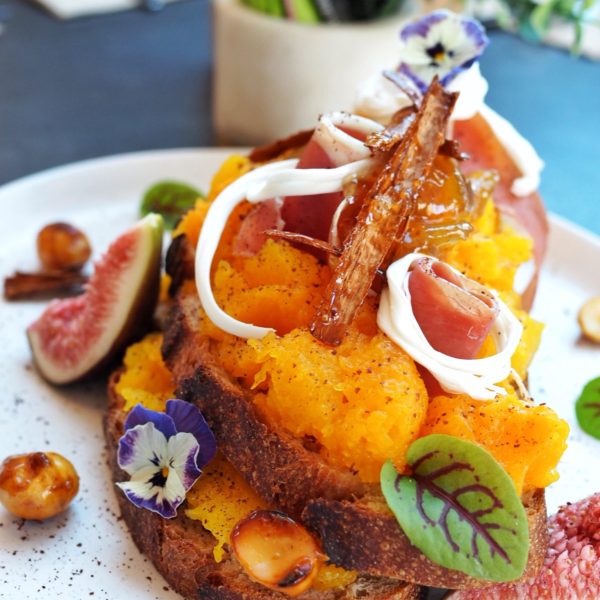Pickling vs. Fermenting
Pickling, like fermented foods, is a great way to add flavour to your home-cooking. But what makes pickled food different from fermented ones?
In a nutshell, pickled foods get their sourness from the addition of an acidic liquid. Fermentation, on the other hand, makes food sour through bacterial reaction.
The pickling process starts with the preparation of a pickling solution (brine) usually composed of vinegar, water, salt, sugar, and a choice of herbs and spices. Fermentation, the process involved in baking sourdough, needs three main ingredients: salt, the natural lactobacillus bacteria (our 24-year-old starter), and air deprivation.
Due to their astringent taste profile (dry, palette cleansing sensation), pickles pair extremely well with fatty meat dishes – like our Café at the Bakery’s signature Beef Brisket Sandwich served with pickled coleslaw on a fresh single origin Batard.
Pickled Coleslaw Recipe:
INGREDIENTS:
- 1 Litre Cider Vinegar
- 800g sugar
- 1 onion – finely diced
- 2 green capsicums – finely diced
- 800ml Water
- 1x Large White Cabbage – shredded
- Sea Salt & Black Pepper
METHOD:
Brine – Pour the vinegar into a large saucepan and add the sugar, celery seeds, onion and capsicum. Bring to the boil for 15 minutes then add the water.
Pickling Process – Scatter a layer of cabbage, sea salt and black pepper in the base of a large non-metallic container and spoon on some of the brine. Then add some more cabbage, salt, black pepper and brine. Keep going with this process until everything is used. Ensure cabbage is completely submerged by pushing it down. It may need to be weighed down.
Cover and allow the mixture to pickle for at least 24 hours at room temperature or 48 hours in the fridge.
The cabbage will last perfectly fine in your cupboard for a couple of weeks.
